

|
Sound
Clips - Monk:
| Monk Orchestra:
| Zawinul:
|
| See Steve's Hand-Written: Thelonious Monk Piano Solo Transcription Joe Zawinul Synth Solo Transcription |
|
Thelonious Monk and Joe Zawinul solos on: "Little Rootie Tootie"(Thelonious Monk) In 1980, as I was preparing to record my solo acoustic guitar album, "EVIDENCE" and assembling the 9 tunes that would comprise my "Monk Medley," I wanted to include "Little Rootie Tootie," which I had always loved from my LP version of "THE THELONIOUS MONK ORCHESTRA at TOWN HALL"(Riverside). The recording featured Hall Overton arrangements for Monk's trio, plus 9 horns, including: trumpet; trombone; alto, tenor & baritone sax; french horn, and tuba. Like all Jazz fans of that era, I'm certain that, when I first purchased the LP, I read the liner notes with enthusiasm, and in detail. 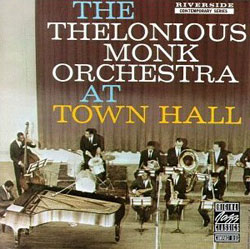 But somehow, until now, this one sentence regarding "Rootie Tootie" seemed to have escaped me, and it said: "....'Rootie Tootie' is the one real tour de force and was undoubtedly the most startling number on the concert program; the ensemble passages are a full-band scoring of Monk's solo on his original trio recording of that number!" As this story continues, you will learn why this is now of even greater significance. But somehow, until now, this one sentence regarding "Rootie Tootie" seemed to have escaped me, and it said: "....'Rootie Tootie' is the one real tour de force and was undoubtedly the most startling number on the concert program; the ensemble passages are a full-band scoring of Monk's solo on his original trio recording of that number!" As this story continues, you will learn why this is now of even greater significance.Now, here we are, and it is 2010. Not so long ago, a Facebook friend posted a link to a Joe Zawinul YouTube video clip which, for some reason, is rather poorly titled: "Bop Like." As I had been a member of Weather Update, which preceded the Zawinul Syndicate, I only recall that we never played anything that was remotely 'Bop like' - so, I was anxious to give it a listen. After one gets through the percussion feature, and a brief keyboard solo introduction, suddenly, I recognized that the band is playing Monk's "Little Rootie Tootie"!!! And, of course, it really sounded great. That band, from 1989, included the great Scott Henderson(Guitar), Gerald Veasley(Elec. Bass), Cornell Rochester(Drums), and Bill Summers(Perc.). Initially, more than anything else, I was struck by the 'soli' or the 'shout' section, as some might refer to it, that Joe and Scott executed before they take the tune out from the [B] section. I wondered to myself just how Joe and Scott had put that together, rehearsal and study time, etc.! So, I wrote Scott an e-mail, and he told me that it was a portion of a Monk piano that Joe had written out. Well, that inspired me to investigate further. It did not take me too long to locate the tune on Monk's first trio CD from 1952, "THELONIOUS MONK TRIO"(Prestige) which featured: Gary Mapp(Ac. Bass) and Art Blakey(Drums). I listened, and there it was, Monk's solo, just as it began, lasting for a chorus-and-a-half, it was, in fact, this exact solo that Hall Overton must have transcribed and then orchestrated for the large ensemble to perform at the famous Town Hall concert in 1959. And, more than this, it was the solo that Joe and Scott were performing, in their way, during that live concert from Munich in 1989. But even after locating the original recording with Monk's piano solo, I just couldn't believe that Joe would have made the effort to have written out anything. This was not his work method during the latter part of his life. And I can't imagine the band working out this arrangement while traveling on the road. Then, suddenly, it hit me, the Zawinul Syndicate had actually recorded "Little Rootie Tootie" on their 2nd CD, "BLACK WATER"(Columbia). I got out that CD, which I hadn't listened to in years, and probably didn't pay much attention to it when it was initially released, and listened again. The performance of "Rootie Tootie" was really great, and had all of Monk's character with Joe's unique touches added in. The first thing one would notice is just how much faster Joe's tempo is than Monk's original recording, or the big band version for that matter. The other element that is so important to Joe's sense of 'swing' is that he loves it when the drummer is playing 4-on-the-floor with his kick drum. This is really old-time big band swing style, and Joe loved that!!! And so, crazy me, I decided that I was going to transcribe a chorus-and-a-half of Monk's solo myself, and then A/B it, compare it with both Hall Overton's 'soli' from the live recording, and then with what Joe Zawinul and Scott Henderson performed on Joe's CD, and the subsequent touring. 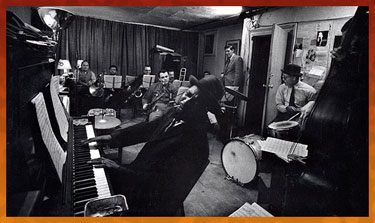 As I went through the process of writing it out, I became engaged in a constant process of discovery. You will see that I chose to write it out in the register of the guitar, which might frustrate or enrage keyboard players who visit these pages, and this means that what you are reading is an octave higher than where Monk actually performed it. So, please forgive me for that. "Little Rootie Tootie" is such an interesting and fun piece of music, because the [A] sections are essentially "rhythm changes" but Monk chose to employ a vi7 chord as minor, and not the usual dominant 7th chord(VI7) that most composers and players would use. You can hear the bass walking in a most diatonic manner, and the chord is Fm7, and not an F7(alt.) chord. Even when Monk is soloing, you don't hear him brush by any A-naturals. However, when the [B] section appears, in essence, it has nothing to do with a normal "bridge" for any "rhythm changes" tune. In this key, you would expect to see an 8-bar section, with two bars for each change beginning with C7, and cycling through F7-Bb7-Eb7, before returning to [A] and Abmaj7. Here, the [B] section begins with a twisted ii-V to Dbmaj7. But, that is followed with ii-V approaches that eventually take you to touch upon all the dominant 7th chords that I previously mentioned. Examine his changes carefully! The other element that struck me upon listening to Monk playing was that his lines utilize all the basic rhythmic variations: 8th-note sub-divisions, 16th-notes, and 8th-note triplets, moving in and out of each grouping with grace and his own style. As I went through the process of writing it out, I became engaged in a constant process of discovery. You will see that I chose to write it out in the register of the guitar, which might frustrate or enrage keyboard players who visit these pages, and this means that what you are reading is an octave higher than where Monk actually performed it. So, please forgive me for that. "Little Rootie Tootie" is such an interesting and fun piece of music, because the [A] sections are essentially "rhythm changes" but Monk chose to employ a vi7 chord as minor, and not the usual dominant 7th chord(VI7) that most composers and players would use. You can hear the bass walking in a most diatonic manner, and the chord is Fm7, and not an F7(alt.) chord. Even when Monk is soloing, you don't hear him brush by any A-naturals. However, when the [B] section appears, in essence, it has nothing to do with a normal "bridge" for any "rhythm changes" tune. In this key, you would expect to see an 8-bar section, with two bars for each change beginning with C7, and cycling through F7-Bb7-Eb7, before returning to [A] and Abmaj7. Here, the [B] section begins with a twisted ii-V to Dbmaj7. But, that is followed with ii-V approaches that eventually take you to touch upon all the dominant 7th chords that I previously mentioned. Examine his changes carefully! The other element that struck me upon listening to Monk playing was that his lines utilize all the basic rhythmic variations: 8th-note sub-divisions, 16th-notes, and 8th-note triplets, moving in and out of each grouping with grace and his own style.Thelonious Monk's original piano solo is full of wonderful elements. His usage of pentatonics is interesting, as you'll notice that over the many areas which are, in essence, Ab major areas during each letter [A], Monk employs F minor pentatonic(F, Ab, Bb, C, Eb) a great deal. In addition to this, you also will hear him add in certain 'blues' references as well. A Cb, a true 'blue note' in the key of Ab, seems to appear the most often. It is interesting that, from a rhythmic perspective, the pentatonics appear in triplet groupings or when phrased in 8th-notes. As it has always been, Monk employs arpeggios beautifully, and I suppose that there could not have been a player of his generation who was not influenced by the still miraculous playing of Art Tatum. Most listeners will be struck by Monk's ascending and descending diminished arpeggios that appear in bar 6 of several of the [A] sections. Even the pick-up into the solo becomes a point of interest, Monk plays a B-natural into the triplet figure C-Eb-F to land on Ab on beat one of [A], but both Hall Overton and Joe Zawinul interpret that B-natural as an Ab leading up to the same triplet figure. A small detail, but interesting considering that Monk himself sat with Hall Overton, and no doubt oversaw all the fine details of what the orchestra was to play. 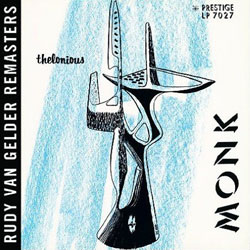 Though I am stating the obvious, when analyzing solos, we must always remind ourselves that these solos, especially during these years, were improvised, and 99% of the time unedited, so, perfection is not to be expected. Unless Monk was extremely rigid about how his solo was to be orchestrated, I believe that any arranger would attempt to make certain phrases a bit easier to play, and adjust, in hindsight, any questionable note choices. At the end of bar 3, and into bar 4 of [A], Overton begins to adjust what Monk had played, and if you look at my transcription of the soli section from Zawinul, and listen to the Monk Orchestra soli, you can tell that Zawinul's interpretation is derived more from the Overton version than from Monk's original solo. In truth, the phrase in bar 4 has become more difficult to execute than what Monk had originally played there. With the pick-up into bar 5, and the 1st 2 beats of that bar, Monk offers us a preview of what was to come later in the solo, though played in 16th-notes, the trilling between Ab and G-natural becomes a signature moment in this solo, and the subsequent orchestrations by Overton and Zawinul. On beat 2 of bar 6, as Monk vaults towards a descending diminished arpeggio, Zawinul changes this beat to a simple ascending Db triad, making it simpler than what Monk had played. Everyone stays faithful to what Monk played as his pick-up into bar 8, but there, the similarities end. Monk concludes letter [A] with a descending pentatonic run in triplets, landing a bit awkwardly on an Eb, which would also serve as his pick-up into [A2]. Overton orchestrated what Monk played, but Zawinul changes the phrase to 16th-notes, landing on a simple quarter-note Eb, and beat 4 becomes another quarter-note Eb. This simplification of a complex phrase, in my view, makes the soli flow much better into the next section. Though I am stating the obvious, when analyzing solos, we must always remind ourselves that these solos, especially during these years, were improvised, and 99% of the time unedited, so, perfection is not to be expected. Unless Monk was extremely rigid about how his solo was to be orchestrated, I believe that any arranger would attempt to make certain phrases a bit easier to play, and adjust, in hindsight, any questionable note choices. At the end of bar 3, and into bar 4 of [A], Overton begins to adjust what Monk had played, and if you look at my transcription of the soli section from Zawinul, and listen to the Monk Orchestra soli, you can tell that Zawinul's interpretation is derived more from the Overton version than from Monk's original solo. In truth, the phrase in bar 4 has become more difficult to execute than what Monk had originally played there. With the pick-up into bar 5, and the 1st 2 beats of that bar, Monk offers us a preview of what was to come later in the solo, though played in 16th-notes, the trilling between Ab and G-natural becomes a signature moment in this solo, and the subsequent orchestrations by Overton and Zawinul. On beat 2 of bar 6, as Monk vaults towards a descending diminished arpeggio, Zawinul changes this beat to a simple ascending Db triad, making it simpler than what Monk had played. Everyone stays faithful to what Monk played as his pick-up into bar 8, but there, the similarities end. Monk concludes letter [A] with a descending pentatonic run in triplets, landing a bit awkwardly on an Eb, which would also serve as his pick-up into [A2]. Overton orchestrated what Monk played, but Zawinul changes the phrase to 16th-notes, landing on a simple quarter-note Eb, and beat 4 becomes another quarter-note Eb. This simplification of a complex phrase, in my view, makes the soli flow much better into the next section.As [A2] begins, Monk presents us with some of his most naturally swingin' phrases, centered around Eb, and in 8th-note subdivisions and groupings. Up until beat 2 of bar 5, both Overton and Zawinul repeated Monk's solo, but only Overton tried to stick to Monk's solo for the rest of this section. Once again, Joe Zawinul chose to simplify it. In bar 6, with Monk's ascending diminished flurry in 16th-notes, Joe changes those two groupings to 8th-note triplets. On beat 2 of the 8th bar, Monk plays a C triad over what might be considered a delayed resolution in his mind: Eb7-Abmaj7. Over Eb7, the C triad helps to outline the hip sonority of Eb7(13b9). Considering that Zawinul is one of the great harmonic minds of contemporary Jazz, it's so interesting that he changed the G-natural to an Ab which some might say is not quite as interesting. But, I'll leave that for your ears to decide. As Monk continues to solo over [B], the conflicts over how this was orchestrated later begin to deepen. As the first 2 bars offer simple swingin' phrases, Overton stays with what Monk played, but Zawinul makes a significant change in the first phrase by moving the Ab, that appears on the 1st beat of bar 2 for Monk, to the and-of-4 of bar 1, giving it more swing, I suppose. 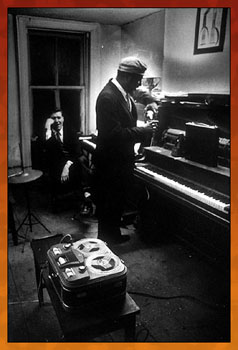 And both Overton and Zawinul left off the last Gb that Monk plays in bar 2. As bar 3 arrives, all bets are off!!! In bar 3, Hall Overton stays with Monk's 16th-note flurries, but Joe uses a grouping of 6 16th-note triplets to vault to a G-natural on beat 4. In bar 4, Joe changes the register of the Db to be below the Bb which follows it, and then alters the rest of that phrase as well. Overton stays faithful to what Monk played. For the final 3 bars of Monk's [B] solo, Overton and Zawinul stay close but both seem to leave off the Fb that Monk played on the and-of-3 in bar 7. And both Overton and Zawinul left off the last Gb that Monk plays in bar 2. As bar 3 arrives, all bets are off!!! In bar 3, Hall Overton stays with Monk's 16th-note flurries, but Joe uses a grouping of 6 16th-note triplets to vault to a G-natural on beat 4. In bar 4, Joe changes the register of the Db to be below the Bb which follows it, and then alters the rest of that phrase as well. Overton stays faithful to what Monk played. For the final 3 bars of Monk's [B] solo, Overton and Zawinul stay close but both seem to leave off the Fb that Monk played on the and-of-3 in bar 7.As [A3] arrives, everyone seems to be in agreement, at least until bar 4. On beat 3 of that bar, Monk clearly played a D-natural, and both Overton and Zawinul changed that note to a B-natural. Perhaps when Monk and Hall Overton were going over the soli, they both decided that a B-natural was a better choice of notes with 20/20 hindsight? Bars 5-6 seem to lay well for everyone, but, in bars 7-8, Joe simplifies Monk's blues phrases to make them swing a little harder, in his sense of that word. Overton chooses to state Monk's solo in a more precise manner, using the 8th-note/16th-note triplet groupings, which, in the end, are certainly harder for a horn section, probably under-rehearsed, to phrase well together, and you can hear that throughout. But, that's part of the charm of the Monk Orchestra version. As Chorus 2 of Monk's solo begins, the intensity of [A] picks-up greatly. If the only version you knew of "Little Rootie Tootie" was the Zawinul Syndicate version on CD, or the YouTube clip of the 'Live in Munich' performance, you might want to believe that the bluesy passage, especially with the double-stop tritone interval being accentuated so heavily, was arranged by Scott Henderson, because it is just so guitaristic, and lays so well on the instrument. But NO!!! That's what Monk originally played on the piano. Take a listen!!! As the date of Monk's recording was 1952, it would seem to be way too early for him to have heard Chuck Berry, and who knows if someone else like Charlie Christian or T-Bone Walker had any guitar influence on Monk's piano style here? Perhaps some of the blues piano players of that era had seeped into Monk's consciousness? Wherever this kind of passage comes from, Overton and Zawinul seemed to thrive on it, and Overton stayed the most faithful to Monk. Both Hall and Joe did not choose to use Monk's upper inversion of that tritone(F-B/Cb) in bar 4, on the and-of-3. And, Joe also changes the phrasing of the rhythms in bar 2, just a point of interest! As we finally arrive at [A2], and the last 8 bars of the solo and soli, we hear Thelonious Monk's wondrous sense of humor at play. The utter 'goofiness' of the repeated 16th-note trilling from Ab-G-Ab-G for a bar-and-a-half, with a response phrase at the end of the 2nd bar of each 2-bar phrase, really drives home the solo, and the soli sections as well. Both Overton and Zawinul find their own ways of treating the last two bars. I believe that each arranger tried to simplify what Monk had originally improvised. When you listen to the Monk Orchestra version, it seems that the initial line in bar 7 was only orchestrated for Phil Woods' alto sax, or someone wasn't making their written part. No one would know without seeing the score. But, it does seem like the ensemble plays the last bar well together. Zawinul chooses to change the phrase almost completely, using a pick-up note, a 16th-note Eb, and then making the last bar all 8th-note triplets. What is so wonderful about Monk's original solo is that the cascading, descending line lands so beautifully on a D-natural which makes the sonority of the first chord of [B] more majestic, richer, as it becomes Am7/D. This is the only time that this happens during the entire tune, and it's a wonderful harmonic contrast. Joe Zawinul's Synth Solo At first, when I rediscovered that Joe Zawinul had recorded "Little Rootie Tootie," I was only interested in listening to how he had treated the "soli" section. Did he actually transcribe Monk's piano solo himself? Did he have someone else do it? Did he use Hall Overton's transcription as his model? All these questions inspired me to try to find answers, and to then draw some conclusions. While looking to see where the soli appeared within the recorded performance, I found myself listening to Joe's 2-chorus solo. 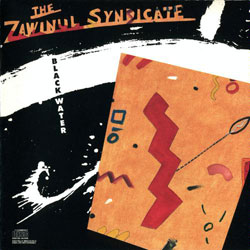 The 1st chorus sees Joe using his Wayne Shorter sample, and I suppose, because of that, I was not too fascinated with it. But, the more I listened to his 2nd chorus, where he had switched to one of his own sounds, I was completely won over! In the midst of this process, I began to pay attention to Joe's sense of swing, and I was reminded of how much Joe loved it when his drummers would play four-on-the-floor from the bass drum. Forgive me for having restated this, but, if you loved Joe Zawinul, it is important to make note of this detail. This rhythm style is probably the way, as a child, that Joe heard the big bands from the '30s and the '40s. And, it has been well-documented just how much Joe adored the music of Duke Ellington. As modern as Joe's music can sound, because of the colors, melodies and World music elements, in the end, it is probably more rooted in the past than anyone would want to admit. The 1st chorus sees Joe using his Wayne Shorter sample, and I suppose, because of that, I was not too fascinated with it. But, the more I listened to his 2nd chorus, where he had switched to one of his own sounds, I was completely won over! In the midst of this process, I began to pay attention to Joe's sense of swing, and I was reminded of how much Joe loved it when his drummers would play four-on-the-floor from the bass drum. Forgive me for having restated this, but, if you loved Joe Zawinul, it is important to make note of this detail. This rhythm style is probably the way, as a child, that Joe heard the big bands from the '30s and the '40s. And, it has been well-documented just how much Joe adored the music of Duke Ellington. As modern as Joe's music can sound, because of the colors, melodies and World music elements, in the end, it is probably more rooted in the past than anyone would want to admit.Like the Monk solo, so much of Joe's improvisation, during the [A] sections of this 2nd chorus, is very diatonic as well. Perhaps it was just his mood or state of mind that day, but, for the most part, the rhythmic emphasis is on a series of running 8th-notes. Letter [A], during bars 1-4 and 7-8, all the notes are from the Ab major scale(Ab, Bb, C, Db, Eb, F, G). In bar 5, Joe employs a configuration of notes that is very much part of the Jazz tradition. The chords are moving from Abmaj7 to Ab7/C, and you could think of the 2nd chord being divided-up into a beat of Ebm7 and a beat of Ab7(alt.) to pull towards the resolution on Dbmaj7. But, when you see and hear Ab-G-Gb-Bb, you know that the player is rooted in the traditional language of Jazz. This phrase reappears in [A3] during the 2nd-half of bar 3. One of the nice linear moments occurs in the 2nd-half of bar 6 over the D°7 chord, leading back to Abmaj7/Eb. You can see that Joe plays a 2nd inversion of a G7 arpeggio. One must remember that when improvising over a true diminished chord, the scale must be whole-tone/half-tone. So, in this case, using 'D' as the root, you would have: D, E, F, G, Ab, Bb, B, Db. The triads within this diminished cycle become: Emaj/min.; Gmaj/min; Bbmaj/min; and Dbmaj/min. And, you can add the b7 to each and/or any of those. Another way to look at this diminished chord in this context is to actually think of it as part of a delayed resolution. A harmonic device, often used by great composers, accompanists, and arrangers would be to have, in this key, G/Ab appear on beat 1 instead of Abmaj7, and then arrive at the true tonic on the and-of-2, or beat 3. The chord scale from G-natural, though it is now a half-tone/whole-tone diminished scale, the notes are exactly the same as they are from D-natural. Even if you chose to think of it from Ab as the root, the notes are the same but, it is then a whole-tone/half-tone diminished scale. Something to think about! Joe's 1st [A] section ends with an ascending line with great intervallic spacing. This is characteristic of his playing, and certainly serves to differentiate this solo from Monk's. Joe's usage of the interval of an octave appears here, Eb up to Eb, and then reappears later in the solo. For example, during [A2]: the end of bar 4; and then, in bar 6. [A2] continues with the mostly diatonic approach, though we do see Joe putting to use the b9(E or Fb) and #5(B-natural) of Eb7 in bar 2, and the b9 again in bar 4. In bars 7-8, we see two 'blue notes' appear, Gb in bar 7, and Cb in bar 8. 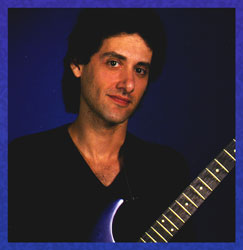 To me, it is the intervallic configurations of Joe's lines that set him apart. The best examples of this appear in bar 2 through the beginning of bar 4, and in bars 7-8. The latter line leads beautifully into the first chord, Am7, of letter [B]. To me, it is the intervallic configurations of Joe's lines that set him apart. The best examples of this appear in bar 2 through the beginning of bar 4, and in bars 7-8. The latter line leads beautifully into the first chord, Am7, of letter [B].During the [B] section, which offers the most complex series of changes, Joe outlines each chord beautifully by putting to use chord tones as well as the extensions. Over the G7 in bar 3, he adds in the b5 and b9. Over the C7b5 chord in bar 4, he adds the #5. Arpeggios appear over the Am7 chord in bar 1; the G7(b5b9) in bar 3; the Dbm7(9sus) in bar 7; and the Bm7 in bar 8. Again, as the line in bar 8 concludes the section, Joe surrounds his target note of 'C' with both its chromatic upper and lower neighbors. When I refer to a 'target note' I am not saying that this is conscious of Joe's part, because it is not, it is all instinct, hearing something and, in a sense, letting the line play you. The 1st phrase of [A3] is as diatonic, and rooted in the key of Ab major, as any of the lines that have begun each [A] section. Joe's little 2 16th-note pick-up to bar 3 utilizes both the #5(B-natural) & b5(A-natural) of Eb7. But after a very diatonic bar 3, he seems to ignore the Bbm7 sonority, and plays through the entirety of bar 4 using alterations of Eb7, again including #5 and b9, plus a D-natural as the chromatic upper-neighbor to Db(7th). The E-natural, which appears on beat 1 of bar 5, is really an extension from the previous bar, and should be seen more as the b9 of Eb7 rather than the #5 of Abmaj7. That same E-natural reappears on the last 8th-note of that same bar, but now it is really part of a C major triad, which creates the sound of C/Db. To these ears, Joe doesn't really touch upon the diminished scale tones for D°7, apart from the very last 2 8th-notes of bar 6, Db and Fb(E-natural). He then treats bar 7 as if it is all an Eb7(alt.) chord. He outlines what might appear to be an E minor triad, but, B(#5) and E-natural(b9) can just be seen as alterations of Eb7. And, as Joe always seems to do, his resolution to Abmaj7 in bar 8 is perfect, and it allows enough space for the eventual pick-up into the soli section. This exercise, for me, has turned out to be a most challenging, yet fun experience. Thelonious Monk, his playing and his compositions have a source of influence and inspiration since my earliest days as a musician with far greater aspirations than talent. To have been afforded the opportunity to have played with Joe Zawinul and to have worked closely with him was a tremendous honor and privilege, though, at times, most difficult. However, my admiration for his playing, composing, and his musical vision is only enhanced each time I spend a few moments with his music. Here, via the beauties of the Internet, I stumbled upon a performance of "Little Rootie Tootie" by the Zawinul Syndicate and that eventually brought me back to the Monk Orchestra version that I thought that I knew very well. And yet, I was only inspired to dig further and to locate Monk's original trio recording. With all the elements then at my disposal, it was time to study and learn again. That is the musician's eternal struggle and joy. I will hope that anyone and everyone who visits these pages will now enjoy the fruits of my labors. Sharing these things is perhaps the greatest pleasure of all. And so, as we near the arrival of Spring 2010, and say "Goodbye!" to the interminable Winter of 2009-2010, I, for one, will be overjoyed to see the end of the cold temperatures and all the snowstorms! Enough already!!! Wishing everyone a wonderful Spring, Summer and Autumn, right now, I can only look that far!!! Addendum: In his fantastic and very detailed liner notes, which one finds enclosed in the box set titled, "THELONIOUS MONK: The Complete Riverside Recordings," Orrin Keepnews wrote the following concerning the now famous, February 28th, 1959, Town Hall concert, and the recording of "Little Rootie Tootie." 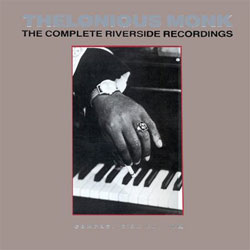 "Three decades ago, it must be remembered, a jazz presentation in a major New York concert hall was still most unusual. Even with Monk's newfound popularity, the idea of offering full-band arrangements of his strange music was too daring for any professional promoter - this evening at Town Hall was put on by Monk's close friend, Jules Colomby. And there was a full house! The scores were the work of Hall Overton, in close cooperation with the composer. Six strong horn players were added to the current quartet(Charlie Rouse had just begun his eleven years as Monk's tenor player), and there was an unusual series of long and detailed rehearsals, rigorously supervised by Thelonious. So when we set-up to record that night, there was no reason to expect trouble. Actually, we encountered only one problem, but it was a classic. Staff engineer Ray Fowler and I were working just offstage, using a single tape machine. Accordingly, I asked Monk to glance at me before each number, to see if we needed a momentary delay to load a new reel of tape. He neglected to check only once - but it was during a reel change, so that the first several bars of Little Rootie Tootie were not recorded. At the first opportunity, I explained the problem to Thelonious, whose solution was direct, outlandish, and quite helpful. At the end of the scheduled program, with the audience screaming for an encore, he calmly announced that the recording engineers had "loused-up" and proceeded to repeat the entire number. The start of the encore, of course, doubles as the opening of both versions here." And so, there you have it, a most interesting anecdote has been added to the wonderful story of this particular Monk tune and these performances. One of the great, great things about such re-issues, when the principal people are still alive and around, is that these kinds of stories can finally be told. It is my pleasure to present this small portion of Orrin's first-hand remembrances of all the recordings here.
[Photos: Thelonious Monk Orchestra Rehearsal w/ Hall Overton
Hall Overton and Thelonious Monk Photos by: Eugene Smith] |